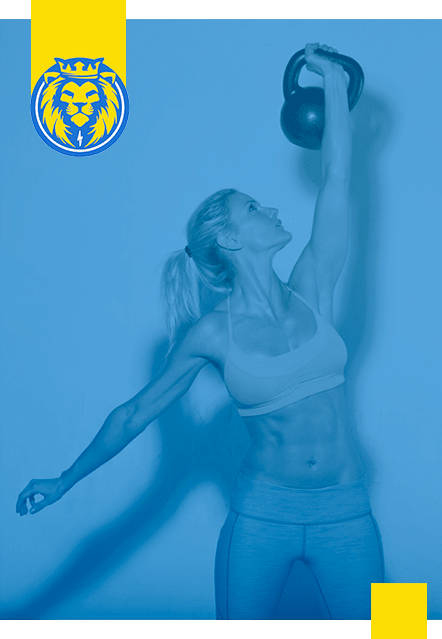
When most people think about fitness, they picture building muscle, losing fat, or improving endurance. While those are all important goals, there’s one piece of the puzzle that doesn’t get nearly enough attention: joint health. Your joints are the foundation of every movement you make. Whether you’re picking up a grandchild, carrying groceries, walking the golf course, or even just getting up from a chair, healthy joints are what keep you moving smoothly and pain-free. And at Legacy Personal Training, we’ve learned that taking care of your joints isn’t just about the exercises you do—it’s about staying consistent and weaving smart training into your everyday life. That’s why our philosophy of Lifestyle Integrated Fitness Training (LIFT) is at the core of everything we do. It’s not just about what happens during your session, but about helping you move better, recover better, and ultimately live better outside of the gym too. The truth is, everyone runs into obstacles. A sore shoulder, a tight hip, or an achy knee is bound to show up at some point. The difference between success and setback lies in how you handle those moments. Too often, people stop altogether when they feel discomfort. They lose momentum, and weeks later, they’re frustrated because they’ve slid backward. The better solution? Keep showing up, communicate with your coach, and make modifications that allow you to continue progressing safely. This is where LIFT makes a big impact. By teaching clients how to integrate mobility, stability, and recovery habits into their lifestyle, we give them tools to keep moving—even when things don’t feel perfect. That consistency is what keeps results coming, and it’s what makes fitness sustainable long-term. To understand how to keep joints healthy, it helps to look at the “joint-by-joint approach.” This framework breaks down the body from the ground up, showing us which joints need mobility and which need stability: Ankles – Thrive on mobility. If your ankles are stiff, it limits your squat depth, stride length, and overall balance. Knees – Depend on stability, but they often pay the price when hips or ankles aren’t functioning properly. Hips – Need mobility to prevent the knees and lower back from overcompensating. Spine – A mix of stability and mobility: the lumbar spine should be stable, the thoracic spine should rotate, and the cervical spine should move freely without strain. Shoulders – Both mobile and stable, but prone to injury when one side of the equation is out of balance. When you train with this model in mind, you don’t just build strength—you create a resilient body that moves the way it’s supposed to, reducing the risk of injury and improving performance in daily life. It’s easy to forget that fitness isn’t just about the gym—it’s about preparing you for the things you do outside of it. That’s why we include endurance phases and higher-rep training, even if they’re not always the most popular. Why? Because those sessions build stamina in your joints, muscles, and connective tissue. Think of it like preparing your body for the volume of steps you take in a day, the hours you spend on your feet during a trip, or the multiple swings in a round of golf. Training this way isn’t flashy, but it pays dividends when you realize you can do more, for longer, with less discomfort. This is what makes LIFT so effective—it connects your workouts to your lifestyle so that every rep has purpose beyond the gym walls. One of the most common mistakes people make is thinking progress only happens during workouts. In reality, progress happens in the recovery between workouts. Here are a few lifestyle strategies we encourage our clients to adopt: Heat before workouts to loosen joints and prep for movement. Evening stretching to restore balance and reduce tightness before bed. Mobility drills for hips and ankles to support pain-free squatting, walking, and daily movement. Protein-rich nutrition after workouts to repair and rebuild joint-supporting tissues. These aren’t extras—they’re essential. They’re the glue that holds your consistency together and the reason you can keep training week after week, year after year. At the end of the day, joint health is really about independence. Strong, resilient joints allow you to keep doing the things that make life enjoyable: traveling, playing golf, hiking, or simply keeping up with your family. Without them, even the simplest daily activities become harder. The good news? You don’t have to settle for stiff, achy joints as you age. With the right approach—one that blends smart training, consistent recovery, and lifestyle integration—you can feel stronger, move better, and live pain-free well into the future. That’s what Lifestyle Integrated Fitness Training is all about: helping you build fitness into your life in a way that’s sustainable, effective, and keeps you consistent no matter what. 👉 Want to take the first step toward healthier joints and a stronger future? Schedule your Starting Point Consultation and discover how Legacy’s proven system can help you live stronger, longer.Building Stronger Joints and a Stronger Life
Why Consistency Matters Most
The Joint-by-Joint Blueprint
Training That Supports Real Life
Recovery: The Missing Link
Resilience for the Long Run

